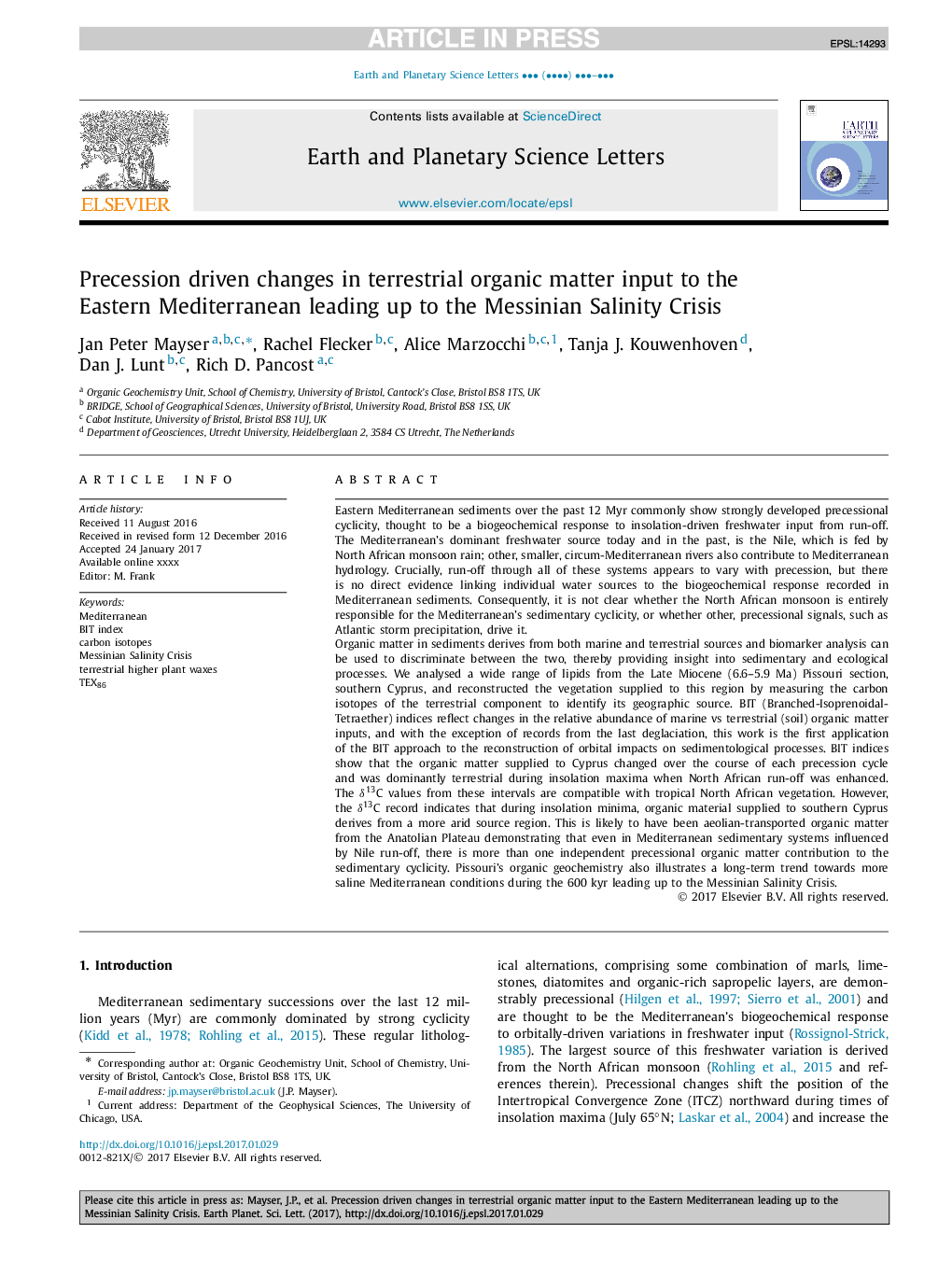| Article ID | Journal | Published Year | Pages | File Type |
|---|---|---|---|---|
| 5779830 | Earth and Planetary Science Letters | 2017 | 13 Pages |
Abstract
Organic matter in sediments derives from both marine and terrestrial sources and biomarker analysis can be used to discriminate between the two, thereby providing insight into sedimentary and ecological processes. We analysed a wide range of lipids from the Late Miocene (6.6-5.9 Ma) Pissouri section, southern Cyprus, and reconstructed the vegetation supplied to this region by measuring the carbon isotopes of the terrestrial component to identify its geographic source. BIT (Branched-Isoprenoidal-Tetraether) indices reflect changes in the relative abundance of marine vs terrestrial (soil) organic matter inputs, and with the exception of records from the last deglaciation, this work is the first application of the BIT approach to the reconstruction of orbital impacts on sedimentological processes. BIT indices show that the organic matter supplied to Cyprus changed over the course of each precession cycle and was dominantly terrestrial during insolation maxima when North African run-off was enhanced. The δ13C values from these intervals are compatible with tropical North African vegetation. However, the δ13C record indicates that during insolation minima, organic material supplied to southern Cyprus derives from a more arid source region. This is likely to have been aeolian-transported organic matter from the Anatolian Plateau demonstrating that even in Mediterranean sedimentary systems influenced by Nile run-off, there is more than one independent precessional organic matter contribution to the sedimentary cyclicity. Pissouri's organic geochemistry also illustrates a long-term trend towards more saline Mediterranean conditions during the 600 kyr leading up to the Messinian Salinity Crisis.
Related Topics
Physical Sciences and Engineering
Earth and Planetary Sciences
Earth and Planetary Sciences (General)
Authors
Jan Peter Mayser, Rachel Flecker, Alice Marzocchi, Tanja J. Kouwenhoven, Dan J. Lunt, Rich D. Pancost,
